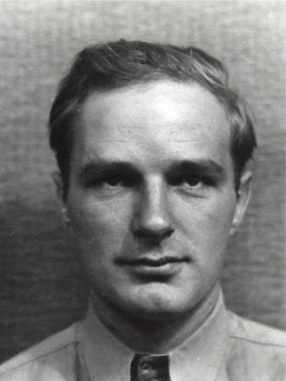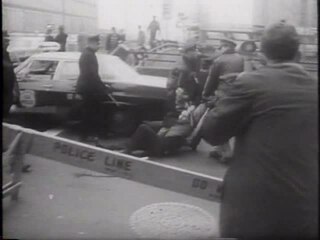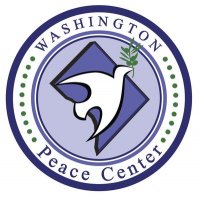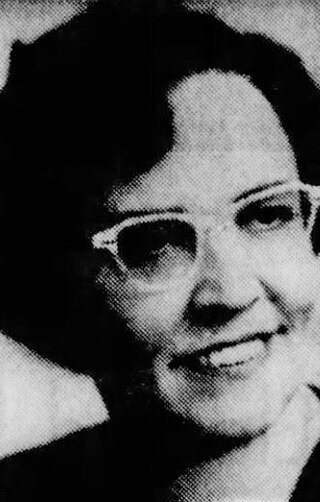Related Research Articles
The War Resisters League (WRL) is the oldest secular pacifist organization in the United States. The organization is celebrating its centennial from the founding date of October 19 into 2024.

David Ernest McReynolds was an American politician and social activist who was a prominent democratic socialist and pacifist activist. He described himself as "a peace movement bureaucrat" during his 40-year career with the War Resisters League. He was a resident of New York City. McReynolds was twice a candidate for President of the United States, running atop the ticket of the Socialist Party USA in 1980 and 2000. He was America's first openly gay presidential candidate.

David T. Dellinger was an American pacifist and an activist for nonviolent social change. Although active beginning in the early 1940s, Dellinger reached peak prominence as one of the Chicago Seven, who were put on trial in 1969.
The Committee for Non-Violent Action (CNVA) was an American anti-war group, formed in 1957 to resist the US government's program of nuclear weapons testing. It was one of the first organizations to employ nonviolent direct action to protest against the nuclear arms race.

A peace walk or peace march, sometimes referred to as a peace pilgrimage, is a form of nonviolent action where a person or group marches a set distance to raise awareness for particular issues important to the walkers.
Peacemakers was an American pacifist organization founded following a conference on "More Disciplined and Revolutionary Pacifist Activity" in Chicago in July 1948. Ernest and Marion Bromley and Juanita and Wally Nelson largely organized the group. The name “Peacemakers” was taken from a section of the Bible, the Beatitudes or Sermon on the Mount: "Blessed are the peacemakers, for they will be called children of God." The group’s organizational structure adopted a multidivisional organizational structure with a loose hierarchy, prioritizing local committees including but not limited to the Tax Refusal and Military Draft Refusal Committee. The Peacemakers were social anarchists whose organizational beliefs are largely attributed to Marxist philosophy. Peacemakers aimed to advocate nonviolent resistance in the service of peace.

Peace News (PN) is a pacifist magazine first published on 6 June 1936 to serve the peace movement in the United Kingdom. From later in 1936 to April 1961 it was the official paper of the Peace Pledge Union (PPU), and from 1990 to 2004 was co-published with War Resisters' International.

Women Strike for Peace was a women's peace activist group in the United States. In 1961, nearing the height of the Cold War, around 50,000 women marched in 60 cities around the United States to demonstrate against the testing of nuclear weapons. It was the largest national women's peace protest during the 20th century. Another group action was led by Dagmar Wilson, with about 1,500 women gathering at the foot of the Washington Monument while President John F. Kennedy watched from the White House. The protest helped "push the United States and the Soviet Union into signing a nuclear test-ban treaty two years later". Reflecting the era in which the group's leaders had been raised, between the First-wave feminism and the Second-wave feminism movements, their actions and pleas leaned towards female self-sacrifice rather than towards their own self-interests. However, they pushed the power of a concerned mother to the forefront of American politics, transforming the mother from a "passive victim of war to active fighter for peace".
A Walk of the People – A Pilgrimage for Life was a walking personal and political action organized by peace activists Dale James Outhouse and Pamela Blockey O'Brien to bring attention to the perils of impending nuclear war between the United States and the Soviet Union. Former European Parliament member and French Green Party co-founder Solange Fernex was the European organizer of the project.
James W. "Jim" Douglass is an American author, activist, and Christian theologian. He is a graduate of Santa Clara University. He and his wife, Shelley Douglass, founded the Ground Zero Center for Nonviolent Action in Poulsbo, Washington, and Mary’s House, a Catholic Worker house in Birmingham, Alabama. In 1997 the Douglasses received the Pacem in Terris Award.

The Washington Peace Center was a nonprofit organization founded and located in Washington, D.C., focusing on peace and social justice. It officially closed ceased operating in 2020.
April Carter was a British peace activist. She was a political lecturer at the universities of Lancaster, Somerville College, Oxford and Queensland, and was a Fellow at the Stockholm International Peace Research Institute from 1985 to 1987. She is currently an Honorary Research Fellow of the Centre for Peace and Reconciliation Studies, Coventry University, and a 'senior editor' on the international editorial board for the International Encyclopedia of Peace to be published by Oxford University Press.

A peace movement is a social movement which seeks to achieve ideals such as the ending of a particular war or minimizing inter-human violence in a particular place or situation. They are often linked to the goal of achieving world peace. Some of the methods used to achieve these goals include advocacy of pacifism, nonviolent resistance, diplomacy, boycotts, peace camps, ethical consumerism, supporting anti-war political candidates, supporting legislation to remove profits from government contracts to the military–industrial complex, banning guns, creating tools for open government and transparency, direct democracy, supporting whistleblowers who expose war crimes or conspiracies to create wars, demonstrations, and political lobbying. The political cooperative is an example of an organization which seeks to merge all peace-movement and green organizations; they may have diverse goals, but have the common ideal of peace and humane sustainability. A concern of some peace activists is the challenge of attaining peace when those against peace often use violence as their means of communication and empowerment.
The Direct Action Committee Against Nuclear War or the Direct Action Committee (DAC) was a pacifist organisation formed "to assist the conducting of non-violent direct action to obtain the total renunciation of nuclear war and its weapons by Britain and all other countries as a first step in disarmament". It existed from 1957 to 1961.
Michael Randle is an English peace campaigner and researcher known for his involvement in nonviolent direct action in Britain and also for his role in helping the Soviet spy George Blake escape from a British prison.
Hugh Brock (1914–1985) was a lifelong British pacifist, editor of Peace News between 1955 and 1964, a promoter of nonviolent direct action and a founder of the Direct Action Committee, a forerunner of the Committee of 100.
During the 20th century a number of peace walks were organized involving the citizens of the United States and the USSR. These peace walks, or peace marches, represented citizen diplomacy initiatives promoting peace and Nuclear disarmament through direct person-to-person interaction among the citizens of the two Cold War opponent states.
George Russell Lakey is an activist, sociologist, and writer who added academic underpinning to the concept of nonviolent revolution. He also refined the practice of experiential training for activists which he calls "Direct Education". A Quaker, he has co-founded and led numerous organizations and campaigns for justice and peace.

Dorothy Hewitt Hutchinson was an American peace, civil rights and environmental activist, lecturer and author during the twentieth century. An advocate of nuclear disarmament, she became the president of American branch of the Women's International League for Peace and Freedom (WILPF) in 1961 and the international chair of WILPF in 1965, the first American woman to hold that position since Jane Addams co-founded the organization in 1915.
References
- ↑ "Peace Marchers Reach Red Square But Soviet Prohibits Speeches". The New York Times. United Press International. October 4, 1961.
- ↑ Wernicke, Günter; Wittner, Lawrence S. (1999). "Lifting the Iron Curtain: The Peace March to Moscow of 1960-1961". The International History Review. 21 (4): 900–917. doi:10.1080/07075332.1999.9640882. JSTOR 40109166.
- ↑ "Anti-war activists march to Moscow for peace, 1960-1961 - Global Nonviolent Action Database, Swarthmore College". nvdatabase.swarthmore.edu.
- ↑ "San Francisco to Moscow Walk for Peace | Archives & Manuscripts". TriCollege Libraries Archives & Manuscripts. Retrieved July 31, 2023.
- ↑ Berke, Joseph (October 29, 1965), "The Free University of New York", Peace News : 6–7 as reproduced in Jakobsen, Jakob (2012), Anti-University of London–Antihistory Tabloid, London: MayDay Rooms, pp. 6–7
- ↑ The Apocalypse Equation
- ↑ "Lay Down Your Arms". October 24, 1996.
- ↑ Kruskal, William (1988), "Miracles and Statistics: The Casual Assumption of Independence", Journal of the American Statistical Association , 83 (404): 929–940, doi:10.1080/01621459.1988.10478682, JSTOR 2290117
- ↑ NYT 2008 results
- ↑ CNN 2008 results
- ↑ UPI report, August 28, 1996